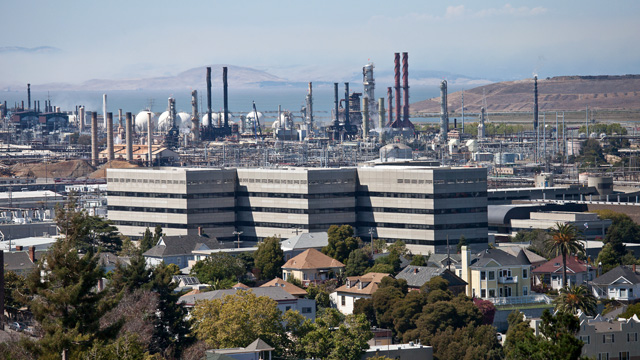http://www.kqed.org/.stream/anon/radio/tcrmag/2014/04/2014-04-25a-tcrmag.mp3
California has a reputation as a green state, with high air and water quality standards. But depending on where you live, your environment might be bad for your health. A new map from the state Environmental Protection Agency ranks all 8,000 census tracts in California, evaluating each neighborhood and the people who live there to determine their vulnerability to environmental risks. We talk to L.A. Times reporter Tony Barboza, who's covering the new Cal-EPA tool.
Tony Barboza: It's not a huge surprise to a lot of people that some of the most pollution-burdened communities are in places like the San Joaquin Valley, in the urban core of Los Angeles and in the Inland Empire. What jumps out more than the locations generally are just the small neighborhoods. I went to a community this week in reporting this story in the San Gabriel Valley suburb of El Monte. It's just a small neighborhood of houses and apartments where few people there were aware their neighborhood had significant issues with groundwater contamination, cleanup sites, hazardous waste sites. It's not something that people are necessarily aware of that's in their midst. So it really is a tool that gives some perspective to people about what is close to them and perhaps having a health effect.
Scott Shafer: And this didn't just measure things like air pollution, water pollution, groundwater contamination. There were other socioeconomic factors like poverty and levels of education. What is the thinking about including those, and how did that affect the results?
Barboza: I think the state officials who drew this up would probably argue that, by including those, you're not just pinpointing areas that are most exposed to pollution, but the communities that are least equipped to cope with the effects.
